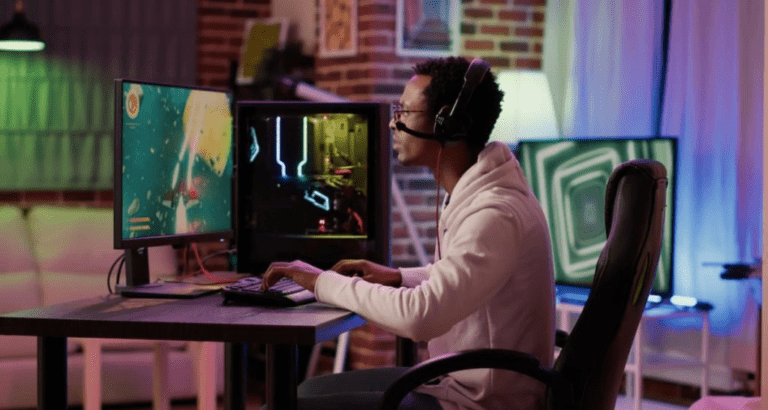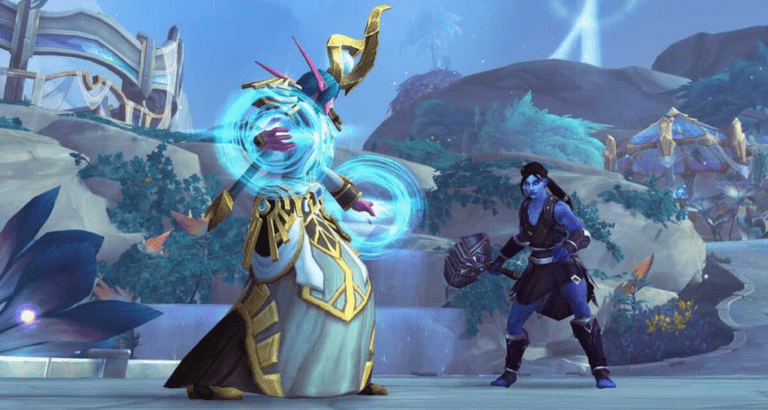Takeaway
Game studios increasingly rely on external teams for 2D and 3D game art to enhance creativity, reduce costs, and expedite production timelines. This strategic approach allows studios to leverage specialized skills, access diverse artistic styles, and maintain flexibility in resource allocation, ultimately leading to higher-quality game experiences.
Introduction
The video game industry has evolved into a complex ecosystem where collaboration and specialization are paramount. As game development becomes more intricate, studios face the challenge of delivering high-quality content within tight deadlines. One effective strategy that has emerged is the utilization of external teams for 2D and 3D game art. This article delves into the reasons why game studios opt for external art teams, exploring the benefits, challenges, and best practices associated with this approach.
The Need for Specialized Skills
Creating compelling game art requires a diverse set of skills, including character design, environment modeling, texturing, and animation. Many game studios may not have the in-house expertise to cover all these areas comprehensively. By outsourcing to specialized external teams, studios can tap into a pool of talent that possesses the specific skills needed for their projects.
Access to Diverse Artistic Styles
Different games require different artistic styles, from hyper-realistic graphics to stylized, cartoonish visuals. External teams often have experience working on various projects across different genres, allowing them to bring unique perspectives and artistic styles to the table. This diversity can enhance the overall aesthetic of a game, making it more appealing to a broader audience.
Scalability and Flexibility
Game development is often subject to fluctuating demands. During peak production phases, studios may require additional resources to meet deadlines. External teams provide the flexibility to scale up or down based on project needs without the long-term commitment of hiring full-time staff. This scalability is particularly beneficial for indie studios or smaller developers who may not have the budget for a large in-house team.
Cost-Effectiveness
Budget constraints are a common challenge in game development. Hiring full-time artists can be expensive, especially when considering salaries, benefits, and overhead costs. By outsourcing art production, studios can often reduce costs significantly. External teams may operate in regions with lower labor costs, allowing studios to achieve high-quality results without breaking the bank.
Time Efficiency
Time is a critical factor in game development. The longer a project takes, the more it can cost in terms of resources and potential revenue loss. External teams can help expedite the art production process, allowing studios to focus on other aspects of game development, such as programming and gameplay mechanics. This division of labor can lead to faster turnaround times and quicker releases.

Quality Assurance and Consistency
Maintaining a consistent quality level across all game assets is crucial for player immersion. External teams often have established workflows and quality assurance processes that ensure the final product meets industry standards. By collaborating with experienced artists, studios can achieve a higher level of polish and consistency in their game art.
Collaboration and Communication
Effective collaboration is essential when working with external teams. Clear communication channels and project management tools can facilitate seamless interactions between in-house and external artists. Regular feedback loops and iterative processes help ensure that the art aligns with the studio’s vision and meets the project’s requirements.

Challenges of Using External Teams
While there are numerous benefits to outsourcing game art, there are also challenges that studios must navigate. Understanding these challenges is crucial for successful collaboration with external teams.
Quality Control
One of the primary concerns when outsourcing is maintaining quality control. Studios must establish clear guidelines and expectations to ensure that the external team delivers work that meets their standards. This may involve providing detailed briefs, reference materials, and regular check-ins to monitor progress.
Cultural Differences
When working with teams from different regions or countries, cultural differences can impact communication and collaboration. Studios should be mindful of these differences and strive to foster an inclusive environment that values diverse perspectives. Building strong relationships with external teams can help bridge cultural gaps and enhance collaboration.
Best Practices for Collaborating with External Teams
To maximize the benefits of using external teams for game art, studios should adopt best practices that facilitate effective collaboration and ensure high-quality outcomes.
Define Clear Objectives
Before engaging with an external team, studios should define clear objectives and expectations for the project. This includes outlining the desired artistic style, specific deliverables, and timelines. A well-defined scope of work helps prevent misunderstandings and sets the stage for successful collaboration.
Utilize Project Management Tools
Implementing project management tools can streamline communication and collaboration between in-house and external teams. Tools like Trello, Asana, or Jira can help track progress, assign tasks, and facilitate feedback. These platforms ensure that everyone is on the same page and can contribute effectively to the project.
Foster Open Communication
Open communication is vital for successful collaboration. Studios should encourage regular check-ins, feedback sessions, and brainstorming meetings to keep the lines of communication open. This fosters a collaborative environment where ideas can flow freely, leading to innovative solutions and improved outcomes.
Conclusion
In conclusion, the use of external teams for 2D and 3D game art has become a strategic necessity for many game studios. By leveraging specialized skills, accessing diverse artistic styles, and achieving cost-effectiveness, studios can enhance their game development processes. While challenges exist, adopting best practices for collaboration can lead to successful partnerships that yield high-quality results. As the gaming industry continues to evolve, the trend of outsourcing art production is likely to grow, shaping the future of game development.
Key Takeaways
- External teams provide specialized skills and diverse artistic styles.
- Outsourcing can be cost-effective and time-efficient.
- Quality assurance and consistency are crucial for player immersion.
- Effective collaboration requires clear objectives and open communication.
- Understanding and addressing challenges can lead to successful partnerships.
By embracing these strategies, game studios can navigate the complexities of modern game development and deliver exceptional gaming experiences to players worldwide.

